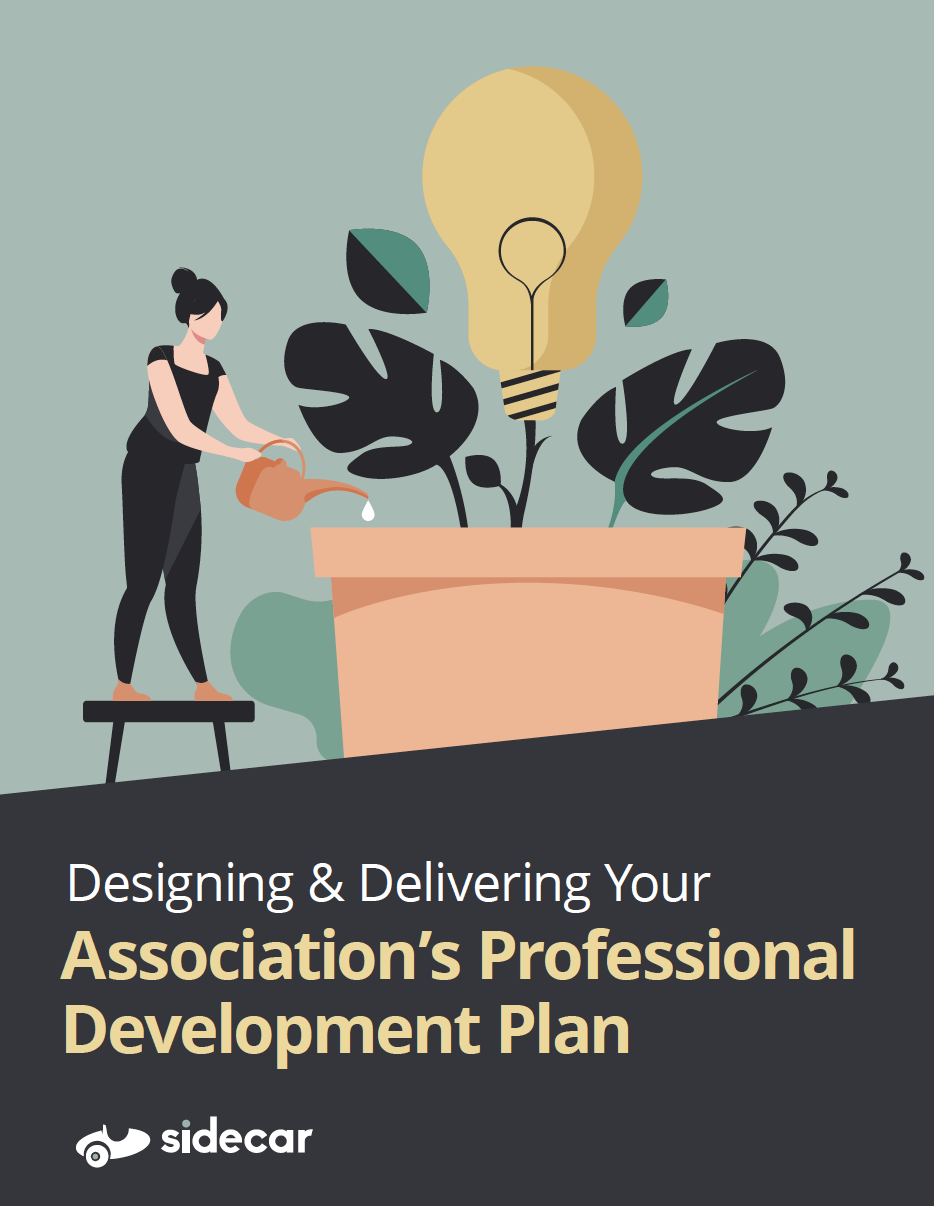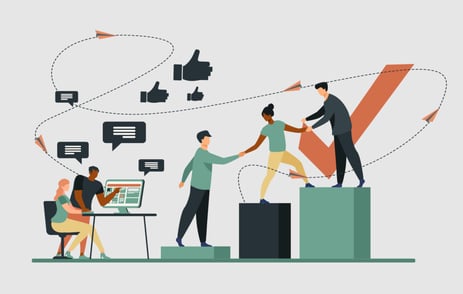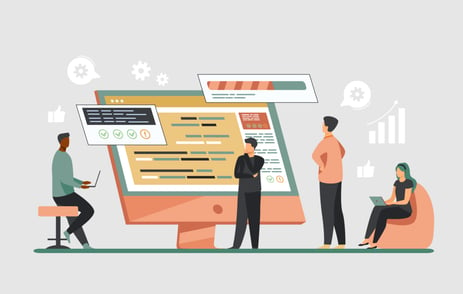Professional development is standard practice in industries where certifications are required, but for associations and other businesses, this optional practice is often dismissed as an unnecessary expense. After all, you hired employees because they already had the skills you needed, right?
Turns out, professional development is the best way to keep the tools in your employee toolbox sharp and effective. But not all professional development is created equal. When you are choosing a course or program, here are nine keys to effective professional development.

Design & Deliver Your Association's Professional Development Plan
Build your association's professional development plan! From assessing your organizational needs to implementation, this eBook helps you design your new PD progam.
Download Now
What is professional development?
Professional development is continuing education delivered to people already working in their field. It can come in the form of a one-off seminar or an ongoing series of courses or programs that are incorporated into a person's regular business activities.
Some professional development might include:
- Certificate programs
- Leadership courses
- Workshops
- Online courses
You might be looking for professional development to:
- Add new concrete skills
- Develop better interpersonal skills
- Advance in the organization
- Move into leadership
- Grow your network
- Add to your credentials
Why professional development matters
On an individual level, professional development helps employees to stay fresh, refining and adding to their skillset as they advance through their career. This helps avoid feelings of restlessness or stagnation. It also develops employee confidence and a broader range of abilities within the company.
Organizationally, professional development is a critical piece for recruiting and retaining the brightest minds and sharpest talents. It lets prospective candidates know:
- You are committed to their growth in the field.
- You are hiring for longevity.
- You value their personal development.
- There is room for promotion and advancement.
Professional development helps keep your organization agile and competitive in a fast-changing landscape.
9 keys to effective professional development
The most effective professional development promotes a growth mindset. There are nine key features to look for.
1. It's focused on your needs
Before selecting professional development of any kind, make sure you have clearly identified your needs. Ask yourself or your employees:
- What areas need work?
- What are areas of strength?
- What do we need to apply identified strengths to our growing edges?
These questions can be used to identify professional development that directly addresses organizational and individual needs.
Unlock the power of Sidecar for your entire association.
Learn more2. It respects, acknowledges and builds on prior knowledge
Adults come to professional development with a lifetime of experiences, both in and out of the workplace. The most effective professional development respects personal experience, acknowledges the importance of it in the context of the course offering and builds on what participants already know.
Professional development for adults requires that the facilitator:
- Treats the participants as equals
- Gives time and space for participants to apply prior knowledge and experience to novel situations
- Allows for participants to incorporate thoughts, feelings, and emotions into their practical learning
3. It accommodates a variety of learning strategies and communication preferences
More than learning styles, look for professional development that accommodates a variety of learning strategies. This means a course or seminar offers ample opportunity to learn from:
- Hands-on work
- Writing
- Discussion
- Diagrams and visuals
Along those same lines, participants should be encouraged to demonstrate what they know in whatever modality they like best. Some might choose to present their understanding of the group, while others might prefer writing down what they know.
You might also look for professional development that has a variety of formats in the same topic. Choose from delivery models that include:
- In-person
- Online
- Hybrid
- Synchronous
- Asynchronous

Design & Deliver Your Association's Professional Development Plan
Build your association's professional development plan! From assessing your organizational needs to implementation, this eBook helps you design your new PD progam.
Download Now
4. It requires active participation
People of every age are not simply vessels waiting for knowledge to be poured into them. In fact, sitting and passively listening to a lecture is one of the least effective ways to learn something.
While some adults do have a better capacity to listen and learn than younger students, even those who do well in this setting learn more when active participation is added to the lecture.
This might include:
- Offering time for small group discussion of ideas.
- Posing a problem to solve, based on new information.
- Applying concepts in a lecture to a participant's work.
5. It applies to real life
One of the fastest ways to lose adult attention in a professional development course is to make it entirely conceptual and inapplicable to a learner's current situation.
The opposite side of that coin? Deliver professional development that helps participants do their job better, faster, and with more precision.
6. It provides coaching and support
Once the seminar is over or the course is finished, do participants have access to expert coaching and support? The highest quality professional development makes space and time for follow-up questions, clarification of information, and unique problems that arise based on new situations.
This coaching and support need not be indefinite. There can be a stated period of time, after which follow up development or additional training can be implemented if the need arises.
7. It encourages collaboration
Although some jobs must be completed by one person, most associations and other professional organizations thrive in a community of collaboration. Effective professional development provides opportunities for collaboration either across departments or in small groups or pairs of colleagues.
Collaborative professional development builds networks and makes for better connections between peers, too.
8. It offers time for reflection
Just as there are different learning styles and preferred methods of communication, so, too, are there different paces of learning. Some people will require more time for reflection and assimilation. Effective professional development provides such time for reflection and circles back to address any gaps or answer any questions.
9. Effective professional development is ongoing
So-called “one-and-done” professional development does not promote a culture of continuous growth and education. Rather, it positions this practice as a one-off requirement that is not really necessary.
Truly effective professional development is marked by an organizational commitment to ongoing education and learning. This encourages community members not only to take advantage of association offerings but also to seek out their own opportunities for learning.
Get the most out of your professional development
By carefully determining your needs and taking the time to choose effective professional development, you are ensuring that participants get the maximum benefit. This type of learning is rewarding and promotes a culture of growth and exploration that can benefit any organization.
Tags:
Empower Yourself
November 27, 2022


